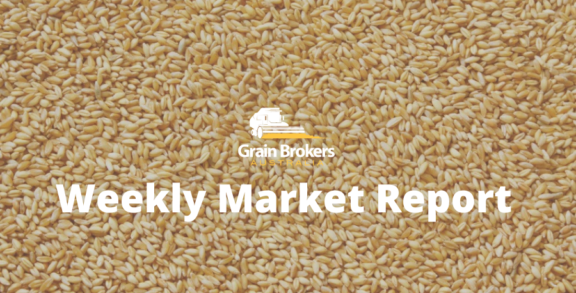Wheat production in India is expected to rebound to record levels in 2023 after high domestic prices encouraged farmers to expand their planted area in the autumn, and weather conditions have remained favourable across most regions throughout the growing season.
The Indian government announced last week that they are currently estimating wheat production from this year’s harvest will be 112.2 million metric tonne, 2.4 per cent higher than the 2021 harvest record of 109.6MMT. India is the world’s second-biggest producer and consumer of wheat, and a production recovery of this magnitude should allow the government to replenish dwindling inventories and tame record domestic wheat prices.
Late monsoon rains throughout September and into October last year provided the perfect springboard for rabi (winter) crop plantings. The latest data from the Ministry of Agriculture and Farmers Welfare estimates the total area planted through to January 20 was a record 69.6 million hectares compared to 67.7 million hectares at the same time in 2022, and around 10 per cent above the ten-year average.
Wheat makes up almost half of the area at 34.1 million hectares, followed by pulses at 16.4 million hectares and oilseeds at 10.8 million hectares. The area sown to coarse grains such as barley, oats and sorghum is estimated at 5.2 million hectares and rice rounds out the list with 3.1 million hectares. Plantings of sorghum, pulses and oilseeds are marginally lower year-on-year as farmers shift to crops such as wheat which have a higher return per hectare.
While the crop was planted on time last year and is progressing well under adequate soil moisture conditions, record production is not a fait accompli. Production is at risk if temperatures in the critical northern growing regions climb unexpectedly in the leadup to harvest, which is likely to commence mid-way through March. Many farmers in the central and north-western states have bought their planting window forward by seven to ten days this season to minimise heat stress issues in the spring as the crop ripens.
The weather has been kind thus far, void of last year’s heatwave and flood conditions. Night-time temperatures have been cool, humidity has been relatively low, which has reduced the disease burden, and there are no signs of a repeat of last year’s locust plague. The supply of crop inputs has also been much better managed this year, leading to relatively good soil and plant health, rendering the crop less susceptible to disease and pest invasion.
The Ministry of Agriculture & Farmers Welfare remains faithful to its 2022 wheat harvest output of 107.7MMT, despite most local pundits saying it was in the 92-97MMT range. The USDA’s Foreign Agricultural Service reduced its old crop production number to 100MMT late last year, but the USDA’s official number was unchanged this month at 103MMT. The price action in the market over the past twelve months certainly suggests that final wheat production was much less than the government’s lofty number.
As last year’s harvest commenced, the government was bullish. They were predicting another bumper wheat crop to follow the previous season’s record and had a carry-in of around 20MMT. Global wheat prices had risen sharply following Russia’s invasion of Ukraine. Sensing an opportunity, the government announced that at least 10MMT of wheat would be exported in 2022/23, with new markets such as Egypt being developed.
But the expected production bonanza did not eventuate. The Food Corporation of India’s procurement from growers came in at only 18.8MMT, 56.6 per cent lower than the 43.3MMT purchased during the record harvest in 2021. Once the supply constraints became evident in May last year, the government immediately banned wheat exports, except to meet the food security needs of other countries. Prior to the ban, India had exported 2MMT of wheat predominantly from 2021 harvest inventories, and for the balance of 2022 and another 4.6MMT was exported.
And a record wheat harvest this year does not necessarily mean exports will resume. Keeping the cost of staple foods such as wheat in check is one of the highest priorities for Indian Prime Minister Narendra Modi as he faces polls in several states later this year and then a general election in 2024. He needs to ensure the poor are fed and the general population is happy, as high food prices make the government vulnerable.
The current export ban is scheduled to be reviewed in April. However, market rumours persist that a decision on extending the ban is likely to be made by the end of March or early April at the latest, and a resumption of wheat exports is not expected until after the general election, which is due to be held in May next year.
Food inflation has been escalating in India over the last twelve months, fuelled by the rise in domestic grain prices. The retail cost of wheat rose 11.73 per cent in July last year but was up 25 per cent last month, and state reserves have shrunk to their lowest New Year level since 2017. As of January 1, central pool stocks stood at 17.2MMT, almost 48 per cent lower than the 33MMT held at the same time last year.
In a concerted effort to subdue the sharp spike in prices, the Food Corporation of India announced on January 25 government approval for the sale of 3MMT of wheat from state reserves through various open market supply channels during February and March. The grain is being offered through e-auctions to local millers and bulk buyers at a maximum volume of 3,000 metric tonne per buyer per auction. Almost 1.3MMT has been sold in the two e-auctions held to date, of which 0.9MMT has already been collected by buyers which has resulted in a distinct cooling of retail prices. A further 1.17MMT will be offered for sale from 620 depots across the country on February 22.
Additionally, wheat will be offered to state governments for their food security programs, as well as public sector organisations and cooperatives at a concessional rate of 23,500 Indian Rupee (AU$415) per metric tonne on condition that the wheat is converted to flour and supplied to the public at INR29,500 (AU$520) per metric tonne.
The government also hopes the measure to release 3MMT of stocks will reduce domestic wheat prices leading into the harvest period to around INR23,000-24,000 (AU$405-422). This level would support the government’s intended procurement program at the proposed minimum support price of INR21,250 (AU$375) per metric tonne.
Call your local Grain Brokers Australia representative on 1300 946 544 to discuss your grain marketing needs.





